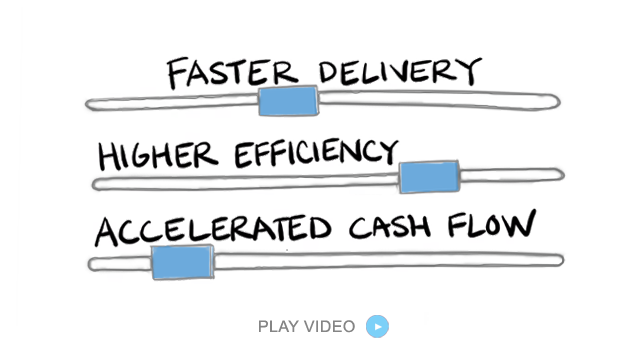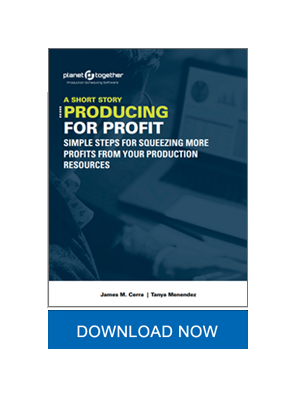Handling New Tariffs: How Supply Chain Managers in Medical Manufacturing Can Adapt and Stay Competitive
Global trade dynamics are in constant flux, and for Supply Chain Managers in medical manufacturing, few challenges are as disruptive—or as politically charged—as new tariffs. Whether driven by geopolitical tensions, economic nationalism, or sudden shifts in regulatory frameworks, these tariffs can upend carefully orchestrated sourcing strategies, inflate production costs, and threaten delivery schedules of critical healthcare products.
The stakes in medical manufacturing are exceptionally high. Unlike other sectors, disruptions here don't just impact revenue—they can directly affect public health. So, how can you, as a Supply Chain Manager, adjust quickly and effectively when new tariffs are imposed?
Let’s explore strategic, operational, and digital solutions that can help you maintain control and agility. We'll also take a close look at how advanced planning and scheduling (APS) systems like PlanetTogether, especially when integrated with ERP systems such as SAP, Oracle, Microsoft Dynamics, Kinaxis, or Aveva, can offer an indispensable advantage in navigating tariff-driven volatility.
Understanding the Impact of Tariffs on Medical Manufacturing
New tariffs often target raw materials, components, or finished goods. For medical manufacturers, that can mean sudden increases in the cost of key items such as:
Surgical-grade steel
Electronic components for imaging devices
Biopharmaceutical ingredients
Medical plastics and resins
Packaging materials
These cost increases ripple through your supply chain, requiring quick recalculations of landed cost, profitability, and supplier feasibility. Even worse, sudden tariff changes can interrupt the just-in-time (JIT) delivery models that many medical manufacturers rely on to avoid excess inventory while meeting strict regulatory standards.

Strategic Adjustments to Make
Reevaluate Your Sourcing Strategy
Tariffs often expose the risks of single-source dependencies. Supply Chain Managers should proactively diversify their supplier base and explore options in tariff-free or lower-tariff regions.
Tip: Use data-driven modeling tools to simulate cost scenarios based on different sourcing locations and volumes. APS tools like PlanetTogether offer scenario planning features that can help visualize trade-offs in real time.
Negotiate with Suppliers
In some cases, you can renegotiate terms with suppliers to share the burden of tariffs. Suppliers may be willing to absorb part of the cost in exchange for long-term contracts or higher volumes.
APS + ERP Integration Advantage: When PlanetTogether is integrated with SAP or Oracle, procurement and production teams have access to synchronized data on lead times, pricing, and supplier performance—making negotiations more informed and effective.
Optimize Logistics to Reduce Costs Elsewhere
Even if you can’t eliminate tariffs, you can offset their financial impact by optimizing transportation and inventory holding costs.
This could involve:
Switching to less expensive shipping methods for non-urgent items
Consolidating shipments to reduce freight costs
Adjusting safety stock levels based on tariff-impacted items
PlanetTogether’s ability to model logistics costs within the broader scheduling framework is especially valuable here.

Operational Adjustments Using PlanetTogether APS
Dynamic Scheduling Based on Tariff Exposure
With PlanetTogether APS, you can configure the system to prioritize or deprioritize production runs based on real-time cost implications of tariffed materials.
For instance, if a batch of diagnostic devices requires a now-tariffed component, you might choose to delay production in favor of items with lower-cost inputs. Integration with ERP systems like Microsoft Dynamics or Kinaxis ensures that inventory, material availability, and financial implications are always up-to-date.
What-If Simulations for Proactive Planning
One of the standout features of PlanetTogether is its what-if scenario modeling. This is a powerful tool for Supply Chain Managers who want to understand the potential impact of:
A new 10% tariff on Chinese-sourced APIs
Supplier shutdowns in a high-tariff country
Switching to domestic suppliers at higher base costs but no tariffs
The system allows you to evaluate the cost, capacity, and delivery implications before making decisions.
Supplier and Production Synchronization
Through seamless integration with SAP or Aveva MES, PlanetTogether can help synchronize supplier orders with production schedules. This ensures that tariffed materials aren’t stockpiled unnecessarily, while also avoiding costly downtime due to missing components.
Leveraging Digital Twin Technology
Medical manufacturers increasingly use digital twins—virtual replicas of production systems—to simulate changes. When paired with APS systems like PlanetTogether, this provides end-to-end visibility into the supply chain.
Imagine modeling a new tariff and instantly seeing:
Which products will experience cost increases
Which lines will be underutilized or overbooked
What alternate materials or suppliers can be swapped in
PlanetTogether’s ability to act as a digital twin when connected with Kinaxis RapidResponse or Microsoft Azure-based analytics platforms unlocks unprecedented visibility and agility.
From Reactive to Resilient: Building a Tariff-Ready Supply Chain
The key to weathering new tariffs isn’t just reaction—it’s resilience. This requires:
Real-time data across systems
Automated scheduling that adapts to change
Scenario planning for informed decision-making
Cross-functional collaboration made easier by integrated platforms
PlanetTogether’s integration with leading ERP and MES systems ensures that your supply chain decisions are never made in a vacuum. Whether it’s SAP’s financial analytics, Oracle’s supplier management tools, or Kinaxis’s supply chain orchestration—PlanetTogether pulls this data into a single, actionable planning environment.
Turn Tariff Turbulence into Strategic Opportunity
Tariffs are an unwelcome but inevitable part of global business—especially in an industry as tightly regulated and globally distributed as medical manufacturing. But with the right tools and mindset, they can become catalysts for modernization, diversification, and efficiency.
As a Supply Chain Manager, you are the bridge between market forces and operational reality. Leveraging systems like PlanetTogether APS, especially when integrated with ERP platforms like SAP, Oracle, Microsoft, Kinaxis, or Aveva, empowers you to not only react to tariff changes—but to thrive in their wake.
If your facility hasn’t yet explored the power of advanced planning and scheduling integrated with your ERP stack, now is the time. Tariffs may be inevitable—but disorganization isn’t. PlanetTogether gives you the visibility, agility, and confidence you need to navigate what's next.
Are you ready to take your manufacturing operations to the next level? Contact us today to learn more about how PlanetTogether can help you achieve your goals and drive success in your industry.
Topics: PlanetTogether Software, Integrating PlanetTogether, Medical Manufacturing, Dynamic Scheduling Based on Tariff Exposure, What-If Simulations for Proactive Planning, Supplier and Production Synchronization





















LEAVE A COMMENT